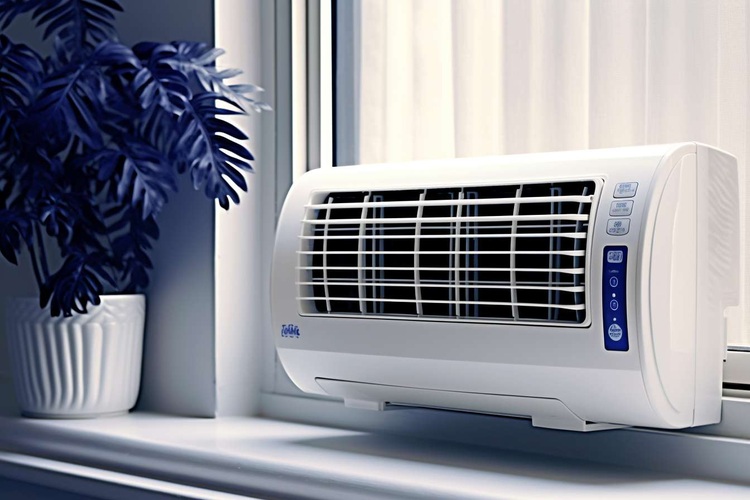Air Conditioners Without Outdoor Unit in 2025: Prices and Features
As temperatures rise and living spaces become more compact, air conditioners without outdoor units are gaining popularity. These innovative cooling solutions eliminate the need for external compressors or condensers, making them ideal for apartments, rentals, and homes where traditional installations are impractical. Understanding the technology, pricing, and features available in 2025 can help you make an informed decision about indoor cooling options.

The demand for flexible cooling solutions has led to significant advancements in air conditioning technology. Units that operate entirely indoors offer convenience and simplicity, particularly for renters, small space dwellers, and those seeking temporary cooling solutions. These systems range from portable evaporative coolers to advanced ventless air conditioners that use innovative heat exchange methods.
Compact Home Cooling Solutions for 2025
Compact cooling devices designed for indoor use come in several varieties. Evaporative coolers, also known as swamp coolers, use water evaporation to lower air temperature and work best in dry climates. Portable air conditioners with single-hose systems vent warm air through windows using adjustable kits, requiring minimal installation. Newer ventless personal coolers use ice or cold water to create localized cooling zones, perfect for desks or bedside tables. Each type offers distinct advantages depending on room size, climate conditions, and cooling needs. These compact solutions typically weigh between 15 and 50 pounds, feature caster wheels for mobility, and can cool spaces ranging from 150 to 400 square feet effectively.
Energy-Efficient Air Conditioning Trends for 2025
Energy efficiency remains a priority as consumers seek to reduce electricity costs and environmental impact. Modern indoor cooling units incorporate energy-saving features such as programmable timers, sleep modes, and smart thermostats that adjust operation based on room temperature. Many 2025 models display Energy Star ratings or equivalent certifications, indicating compliance with efficiency standards. Inverter technology, which adjusts compressor speed rather than cycling on and off, reduces power consumption by up to 30 percent compared to traditional models. Some units include DC motors that draw less power while maintaining consistent airflow. Manufacturers are also improving insulation and refrigerant systems to maximize cooling output per watt consumed, making these devices more cost-effective over their lifespan.
Indoor Cooling Innovations Coming in 2025
Technological advancements continue to reshape the indoor cooling market. Smart connectivity features allow users to control units remotely via smartphone apps, schedule operation times, and monitor energy usage in real time. Voice assistant integration with platforms like Amazon Alexa and Google Assistant enables hands-free temperature adjustments. Air purification systems are increasingly built into cooling units, combining HVAC functions with HEPA filtration to remove allergens, dust, and odors. Some 2025 models incorporate UV-C light technology to sanitize circulating air. Dual-function units that provide both cooling and heating extend year-round utility, while improved dehumidification capabilities help manage moisture levels in humid climates. Quieter operation, with noise levels below 50 decibels, makes these devices suitable for bedrooms and home offices.
How to Choose an Air Conditioner Without an Outdoor Unit
Selecting the right indoor cooling system requires evaluating several factors. Room size determines the necessary cooling capacity, typically measured in BTUs (British Thermal Units). A 150-square-foot room generally needs 5,000 to 6,000 BTUs, while larger spaces up to 400 square feet may require 10,000 to 12,000 BTUs. Climate considerations matter significantly—evaporative coolers excel in arid regions but perform poorly in humid environments, whereas refrigerant-based portable units work across varied conditions. Installation requirements vary by model; some need window venting kits, while others operate completely ventless. Noise tolerance, energy consumption ratings, and additional features like remote controls, oscillating vents, and digital displays should align with personal preferences. Maintenance needs, including filter cleaning frequency and water tank capacity, also impact long-term convenience.
Price Comparison of No-Outdoor-Unit Air Conditioners for 2025
Pricing for indoor air conditioning units varies widely based on technology, capacity, and features. Entry-level evaporative coolers start around 50 to 100 dollars, offering basic cooling for small personal spaces. Mid-range portable air conditioners with single-hose venting systems typically cost between 250 and 500 dollars, providing adequate cooling for medium-sized rooms. High-end models with dual-hose systems, smart features, and enhanced energy efficiency range from 500 to 800 dollars. Premium units combining air conditioning, heating, and purification functions can exceed 1,000 dollars. Operating costs depend on usage patterns and local electricity rates but generally range from 20 to 60 dollars monthly during peak cooling seasons.
| Product Type | Example Provider | Cooling Capacity | Cost Estimation |
|---|---|---|---|
| Evaporative Cooler | Honeywell | 300-500 sq ft | 80-150 dollars |
| Single-Hose Portable AC | Black+Decker | 150-350 sq ft | 280-450 dollars |
| Dual-Hose Portable AC | Whynter | 400-500 sq ft | 500-700 dollars |
| Smart Portable AC | LG | 300-450 sq ft | 550-850 dollars |
| Ventless Personal Cooler | Arctic Air | 45 sq ft | 40-80 dollars |
Prices, rates, or cost estimates mentioned in this article are based on the latest available information but may change over time. Independent research is advised before making financial decisions.
Understanding the full spectrum of available options helps consumers balance budget constraints with cooling requirements. Seasonal sales, manufacturer rebates, and energy efficiency incentives can reduce upfront costs. Warranty coverage, typically ranging from one to three years, provides additional value and protection against defects.
Making the Right Cooling Decision
Air conditioners without outdoor units represent a practical solution for modern cooling challenges. Whether you live in a rental property, need temporary cooling, or simply want to avoid complex installations, these systems deliver flexibility and performance. By considering room size, climate conditions, energy efficiency, and budget, you can identify the model that best meets your needs. The continued innovation in this category ensures that 2025 offerings provide improved comfort, convenience, and cost-effectiveness compared to previous generations. Researching specific models, reading user reviews, and comparing specifications will guide you toward a cooling solution that enhances your indoor environment throughout the warmer months.




